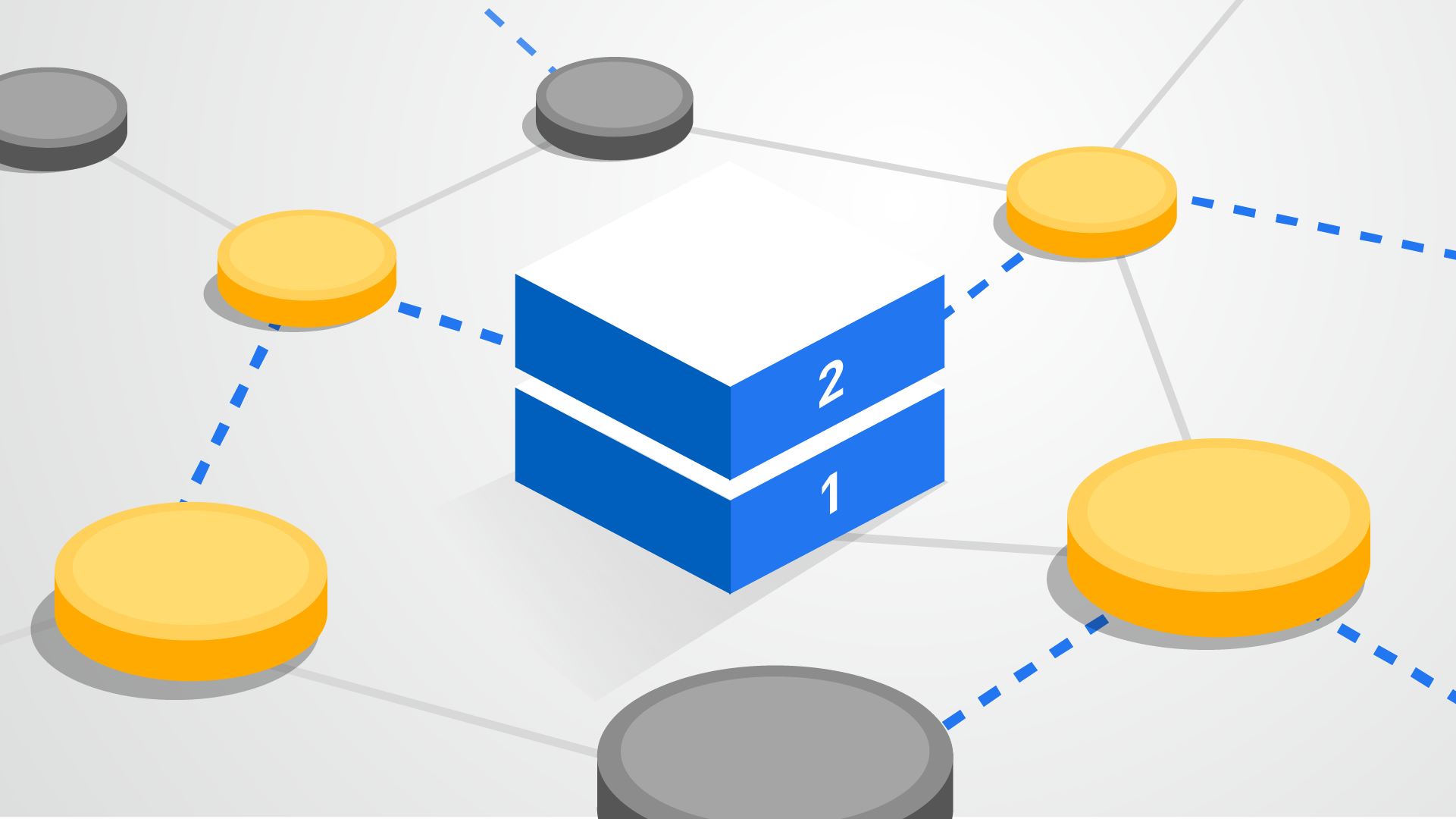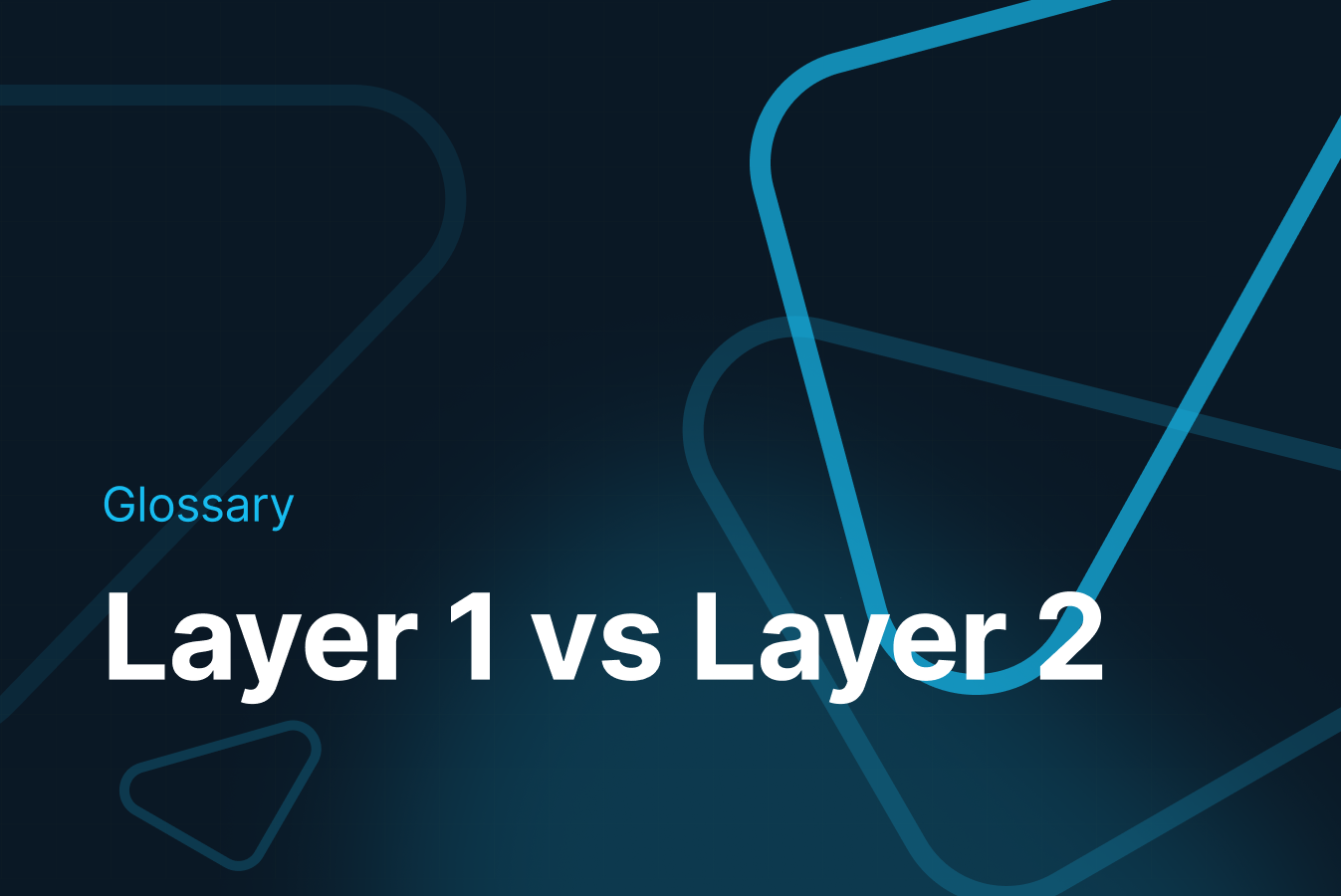1. What are Layer 1 and Layer 2 blockchain solutions?

Layer 1 and Layer 2 are terms used to describe different approaches to blockchain scaling.
-
Layer 1 refers to scaling solutions that are integrated directly into the base protocol of the blockchain. These solutions modify the blockchain's core architecture to increase its capacity and transaction speed.
-
Layer 2 refers to external protocols or systems that are built on top of a Layer 1 blockchain. These solutions help scale transaction processing by offloading some of the work from the main blockchain.
Both types of solutions aim to enhance a blockchain’s ability to process more transactions quickly and efficiently.
2. Why Layer 1 and Layer 2 scaling solutions matter?

Blockchain networks operate in a decentralized manner, processing transactions through consensus protocols that ensure their security and accuracy. However, as these networks grow in popularity, they face scalability issues. For example, Bitcoin’s network processes around 7 transactions per second (TPS), which becomes insufficient when demand increases. This leads to slower transaction times and higher fees.
Scaling solutions are crucial because they allow blockchain networks to handle more transactions, reducing bottlenecks and improving overall performance. There are two primary approaches to achieve this: scaling the Layer 1 blockchain itself or using Layer 2 solutions to take on some of the transaction load.
3. Layer 1 Blockchains vs. Layer 2 Blockchains

3.1. Definition
Layer 1 Blockchains
A Layer 1 blockchain refers to the foundational blockchain protocol. These blockchains handle all aspects of transaction processing and security. Some popular Layer 1 blockchains include:
-
Bitcoin: Uses Proof of Work (PoW) to validate transactions.
-
Ethereum: Initially used Proof of Work (PoW) but transitioned to Proof of Stake (PoS) with the Ethereum 2.0 upgrade.
-
Cardano: Employs Proof of Stake (PoS) to process transactions efficiently and securely.
Scaling solutions in Layer 1 usually involve updates or improvements to the core protocol. This could include changes to block size, consensus mechanisms, or introducing new features like sharding.
Layer 2 Blockchains
A Layer 2 blockchain is an additional protocol built on top of a Layer 1 blockchain. It enhances the scalability and transaction throughput of the underlying blockchain without modifying its core structure. Examples of Layer 2 solutions include:
-
Polygon: A Layer 2 solution that runs on top of Ethereum to offer faster transactions and lower fees.
-
Bitcoin’s Lightning Network: A Layer 2 solution that facilitates off-chain transactions, improving Bitcoin's scalability.
-
Base: Coinbase's Layer 2 network built on Ethereum, offering faster transaction processing.
Layer 2 solutions typically handle transactions off-chain or in parallel chains, helping to reduce congestion on the main blockchain.
3.2 Types
Types of Layer 1 Blockchain Scaling Solutions
Layer 1 scaling solutions focus on improving the base blockchain’s capacity to process transactions. Some common approaches include:
-
Increased Block Size
Increasing the block size allows more transactions to fit into each block. This enhances the overall transaction capacity of the blockchain. For instance, Bitcoin Cash (BCH) increased its block size from 1 MB to 32 MB, allowing for more transactions per second.
-
Updated Consensus Mechanism
The consensus mechanism is responsible for validating and confirming transactions. A more efficient consensus mechanism can increase a blockchain’s scalability:
Bitcoin uses Proof of Work (PoW), which requires significant computational power.
Ethereum transitioned from Proof of Work (PoW) to Proof of Stake (PoS), which improves energy efficiency and scalability by allowing validators to process transactions based on the amount of cryptocurrency they stake.
-
Sharding
Sharding splits the blockchain’s database into smaller, parallel parts (or "shards") to process transactions simultaneously. This increases the overall throughput of the blockchain by allowing different nodes to handle different shards, rather than all nodes processing every transaction.
Types of Layer 2 Blockchain Scaling Solutions
Layer 2 solutions are built on top of Layer 1 blockchains to improve their scalability without altering the underlying protocol. Key types of Layer 2 solutions include:
-
Rollups
Rollups are a popular Layer 2 solution that bundles multiple transactions into a single “rolled-up” transaction. These transactions are then processed on the Layer 1 blockchain as one single entity, significantly reducing congestion. There are two types of rollups:
Optimistic Rollups: Assume transactions are valid and only perform verification in case of disputes.
ZK-Rollups: Use cryptographic proofs to validate transactions off-chain and post them on the main blockchain.
-
Sidechains
Sidechains are independent blockchains that operate parallel to the main blockchain. They process transactions separately but are connected to the main blockchain through a bridge. While sidechains offer increased scalability, they require trust in the sidechain network and the bridge that links it to the main chain.
-
State Channels
State channels allow transactions to occur off-chain in bulk, then record the final transaction state on the main blockchain. This is useful for high-frequency transactions, such as micro-payments. Bitcoin's Lightning Network is an example of a state channel that enables faster, more cost-effective transactions.
3.3 Risks of Layer 1 and Layer 2
While both Layer 1 and Layer 2 solutions improve scalability, they come with their own risks:
Blockchain Forks
Scaling a blockchain may require making significant changes to the base protocol, which can lead to a fork (a split into two separate blockchains). This creates confusion among users and can dilute network value. The Bitcoin vs. Bitcoin Cash split is an example of a contentious fork.
Reduced Transparency
Some Layer 2 solutions, such as sidechains and state channels, process transactions off-chain, which may reduce the level of transparency. Without public verification, these solutions may be more vulnerable to manipulation or fraud.
Trust in the Scaling Network
Many Layer 2 solutions require trust in secondary networks or validators. For instance, sidechains rely on external validators and bridges, which may introduce security vulnerabilities if they are compromised.
4. Conclusion
Scaling blockchain networks is essential for their long-term success and adoption. Layer 1 and Layer 2 solutions provide two distinct approaches to solving scalability issues. While Layer 1 solutions focus on optimizing the core blockchain protocol, Layer 2 solutions build on top of existing networks to handle additional transaction loads.
Both types of scaling solutions have their advantages and challenges, but they are crucial for the continued growth of decentralized technologies. As the blockchain ecosystem evolves, the integration of these solutions will play a key role in supporting higher transaction volumes, reducing costs, and improving the user experience.
Read more:

 English
English Tiếng Việt
Tiếng Việt.png)
.jpg)

.jpg)
.jpg)
.jpg)

.jpg)
.jpg)

.jpg)
.jpg)
.jpg)




